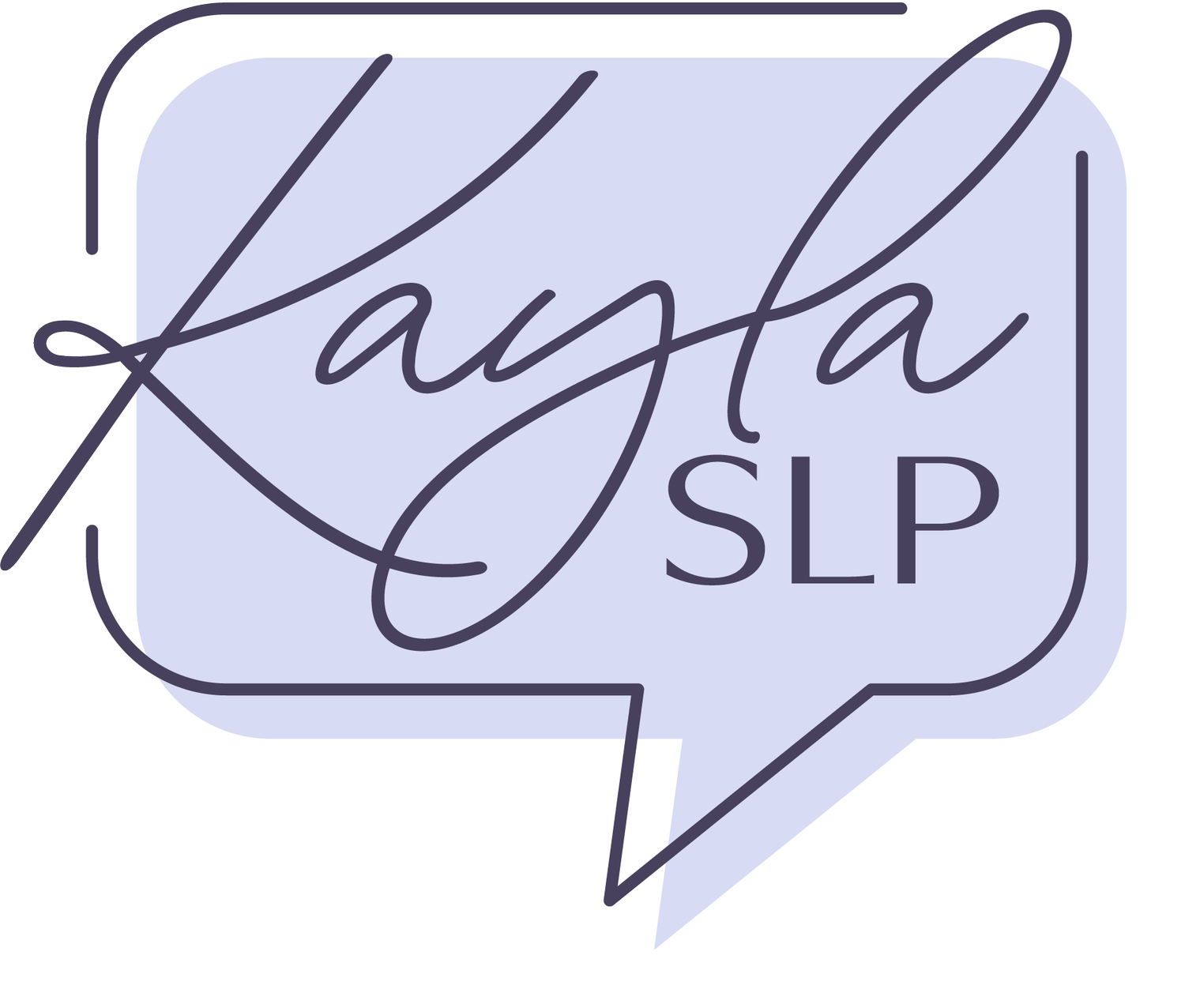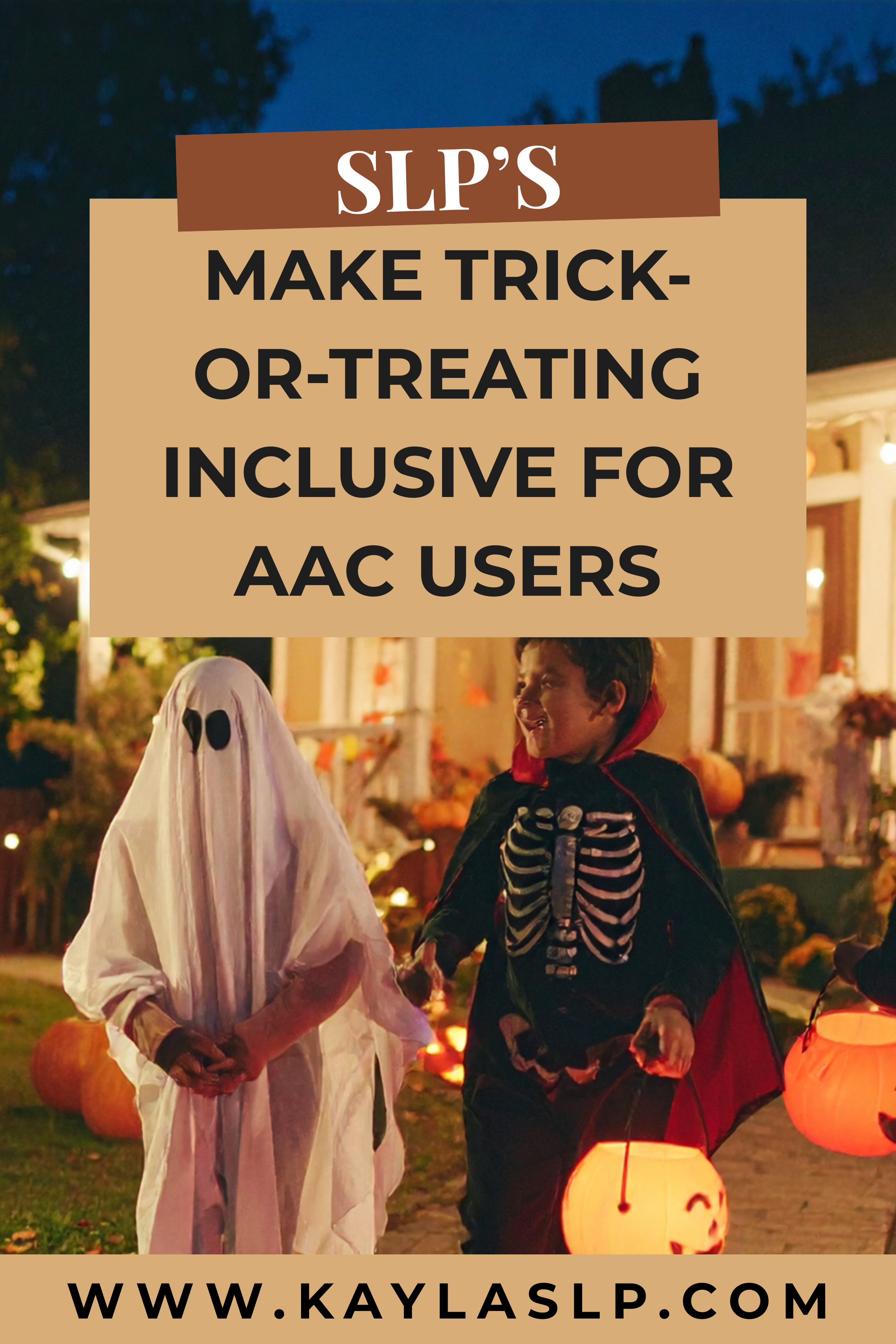Make Trick‑or‑Treating Inclusive for AAC Users
*As an Amazon Associate, I earn from qualifying purchases.
Communication Comes First
Halloween is a time of excitement, costumes, and community. But for children who use AAC (Augmentative and Alternative Communication) as their primary form of communication, it can also be overwhelming or isolating without the right supports. As SLPs and caregivers, it’s vital we remember: AAC is communication and every child deserves to participate fully in this seasonal rite of passage.
This post offers inclusive strategies for making trick‑or‑treating accessible, enjoyable, and meaningful for AAC users, whether they’re at home, in schools, or out in the community.
Why Trick‑or‑Treating Matters for AAC Users
Trick‑or‑treating is a rich opportunity for social interaction, expressive language, and community connection. But these moments often demand quick responses, spontaneous speech, and sensory flexibility. That’s a tall order for many AAC users.
Without preparation and support, kids may end up silent on the sidelines. Our job? Make sure they’re not only present, but included. They should be communicating, engaging, and having fun on their terms.
Early Prepping for Participation
1. Program Halloween Vocabulary in AAC Systems
Add relevant phrases: “Trick or Treat!”, “Thank you!”, “Cool costume!”, “That’s spooky!”, “More candy?”
Don’t forget core word/phrase essentials: “Yes”, “No”, “Help”, “All done”, “I want”, “Stop”, “More”
Use consistent icons and navigation to reduce cognitive load
2. Practice Makes Participation
Role‑play doorbell scenarios at home or in therapy
Rehearse costume discussions and candy choices
Use visual schedules or social stories to outline what to expect
3. Plan a Thoughtful Route
Choose friendly houses or a familiar route
Consider time of day (less crowded = less stress)
Allow breaks and prep for early exits if needed
Making Communication Happen on Halloween Night
1. Keep the Device Accessible
Build costumes around the device
Carry the device using a sling or harness for easy access
Back‑up: bring low‑tech options (like printed boards or tags)
2. Support Natural Communication
Encourage greetings: “Hi!”, “Trick or Treat!”
Model use if needed (“Look! You can say ‘Thank you!’ here.”)
Allow plenty of wait time (it’s worth it)
3. Train the Trick‑or‑Treat Hosts
Create a “Dear Neighbor” card explaining the child’s communication style
Remind hosts to speak directly to the child and allow time for responses
Caregiver & SLPs: Teamwork in Action
SLPs: prep vocabulary, visuals, and strategies during sessions
Caregivers: rehearse, plan, and debrief at home
Joint approach helps build confidence and predictability for the child
Alternative & Sensory‑Friendly Celebrations
Not every child thrives in a traditional trick‑or‑treat setting, and that’s okay!
Look for trunk‑or‑treat events with accessible layouts
Attend school‑based Halloween parties with built‑in supports
Host your own Halloween event at home for friends to visit
Generalizing Communication Through Halloween
Use Halloween to build real‑world skills:
Greetings, requesting, commenting, turn‑taking, describing
Debrief post‑event with visual recounting or AAC recaps
Turn experiences into therapy targets (“What did you say to the ghost?”)
Quick Checklist for an Inclusive Halloween
☑ Program AAC with themed vocab
☑ Print low‑tech backup boards
☑ Rehearse at home
☑ Plan comfortable routes
☑ Notify neighbors
☑ Choose accessible costumes
☑ Celebrate all communication attempts!
Bonus Resources
AAC Trick or Treat Bracelet, Switch and Bucket Labels – The AAC for All
Trick or Treating - an Interactive Social Story FREEBIE – Itty Bitty Speech
Halloween Social Narrative and Awareness Cards: FREEBIE – TLC Talk Shop
In Conclusion, AAC + Halloween = Such a Treat!
Trick‑or‑treating is a chance for kids to connect, express, and belong. With preparation, patience, and purposeful communication support, children who use AAC can thrive during Halloween.
Let’s commit to making communication accessible, visible, and valued, because AAC is not “extra.” AAC is communication.
Love this post?
Pin it for later!
Save this blog post to your favorite Pinterest board so you can come back to it anytime.


